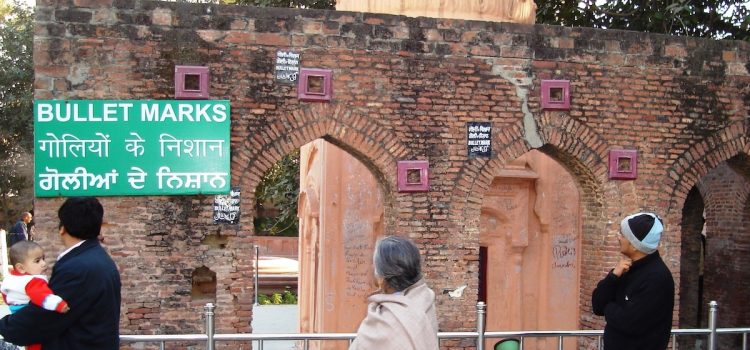

This article is an excerpt from the Shortform book guide to "The Story of My Experiments with Truth" by Mahatma Gandhi. Shortform has the world's best summaries and analyses of books you should be reading.
Like this article? Sign up for a free trial here.
What pivotal moment happened in Amritsar in 1919? How did Gandhi respond?
For Mahatma Gandhi, the Amritsar Massacre marked a critical point in India’s fight for freedom. It highlighted the tension between nonviolent resistance and the British government’s harsh tactics. Gandhi’s approach to this tragedy showcased his commitment to truth and peaceful protest.
Read on to discover how Gandhi’s response to this event shaped the course of India’s independence movement.
The Amritsar Massacre
For Mahatma Gandhi, the Amritsar Massacre changed everything. He writes about the watershed moment in his autobiography. In 1919, the people of India were eager for independence. Gandhi explains that the nonviolent movement for national dignity was growing, but not everyone understood the principles of nonviolence. In Amritsar, which is located in the Punjab region of India, the people’s desire for justice and respect reached a boiling point. There were frequent confrontations between them and the government forces, which responded with unrestrained violence.
(Shortform note: Gandhi doesn’t explain what the Amritsar massacre entailed, only that it was a tragedy. According to a Gandhian scholar, a crowd of thousands gathered in a walled garden in Amritsar to protest the British government’s unfair treatment of Indians. British troops responded violently, resulting in hundreds of people, including children, being killed and hundreds more wounded.)
Gandhi’s response to the Amritsar Massacre exemplified his commitment to satyagraha and to uncovering Truth. Other leaders urged Gandhi to go to Amritsar soon after the massacre—but the government forbade him, which further enraged the population. Instead of traveling to the Punjab despite the prohibition, Gandhi decided to wait. He knew the people were looking to him for leadership, and he believed that, if he had taken bold action, the people of Punjab would have used that as a cue for more violent resistance.
(Shortform note: Gandhi established the Satyagraha movement as a form of peaceful opposition to British colonial rule in India. The term “Satyagraha” combines two Sanskrit words: “sat” (truth) and “agraha” (firmness), embodying the principle of unwavering commitment to truth. This approach involved confronting unjust or unethical circumstances through non-violent means. Gandhi advocated for acts of civil disobedience that challenged unfair laws without causing harm or putting anyone at risk. These nonviolent tactics were designed to resist oppression while maintaining moral integrity.)
Instead, he had multiple conversations with government officials and showed them that allowing him to be there to engage with the people would help bring peace to the situation. Eventually, the government allowed Gandhi to travel to Punjab, and he spent time getting to know the locals’ grievances—finding the factual truth behind the violent events that had taken place, as well as the Truth that would bring morality and justice back to the community. He learned how the British government had been oppressing them, including making them crawl on their hands and knees when they traversed a specific road.
(Shortform note: Gandhi’s visit to Amritsar marked a turning point in his relationship with the British government. Before, he believed that India should remain part of the British Empire but that the government should treat the native population fairly and morally. But seeing the excesses of the British government in Amritsar, and their lack of regret, he began to think that independence was the only path forward.)

———End of Preview———
Like what you just read? Read the rest of the world's best book summary and analysis of Mahatma Gandhi's "The Story of My Experiments with Truth" at Shortform.
Here's what you'll find in our full The Story of My Experiments with Truth summary:
- Gandhi’s life story from childhood until adulthood
- How Gandhi became a world-famous activist
- A look at Gandhi’s commitment to a nonviolent, austere lifestyle






